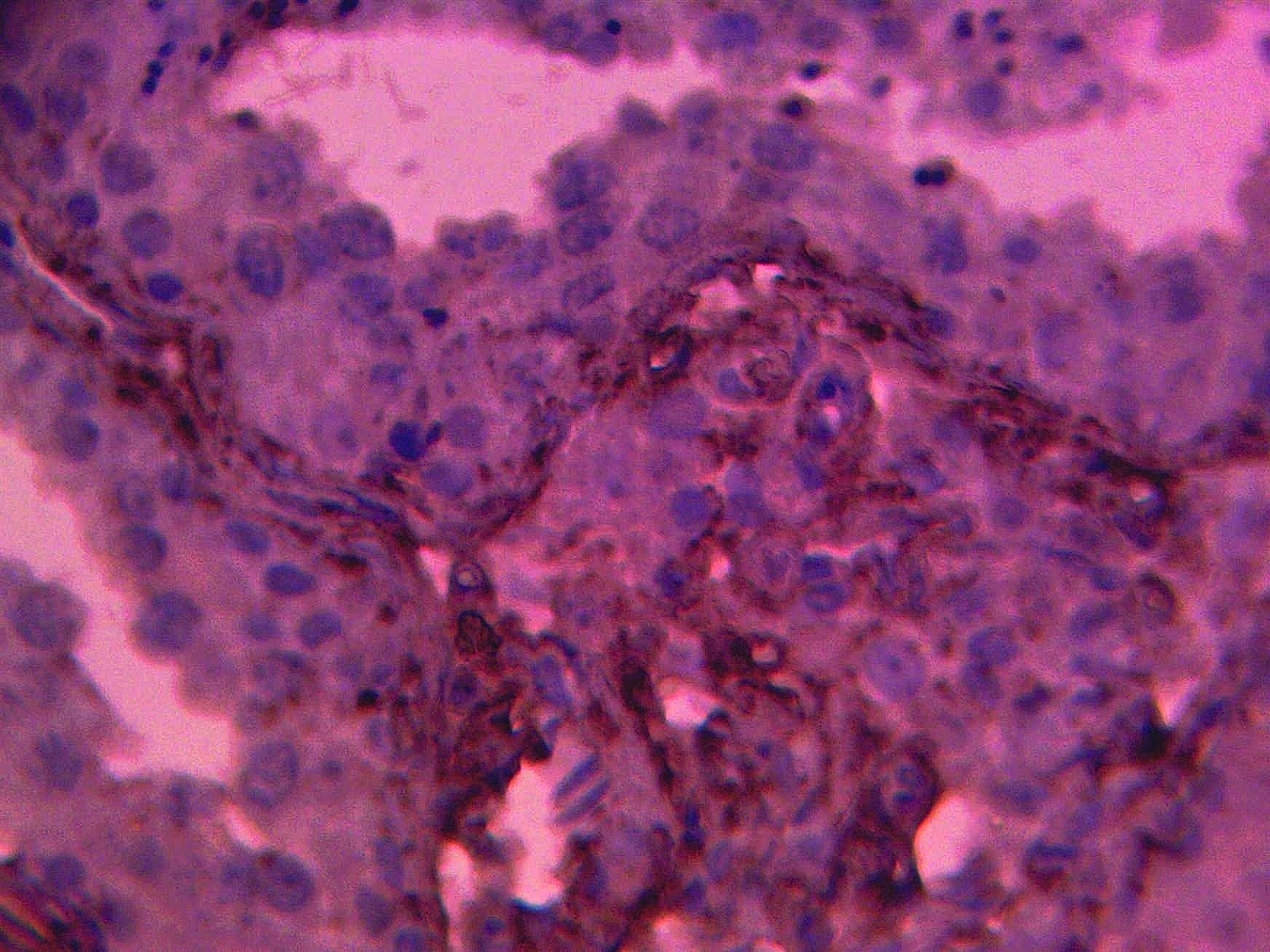Catalogue

Rabbit anti Human ERCC1 (DNA excision repair protein)
Catalog number: X2734P| Isotype | Ig |
| Product Type |
Antigen Immunoaffinity Purified Polyclonal |
| Units | 100 µg |
| Host | Rabbit |
| Species Reactivity |
Human |
| Application |
Immunohistochemistry (paraffin) Western Blotting |
Background
Recognizes a protein of 33-36kDa, identified as the Excision Repair Cross Complementing (ERCC1). The mammalian ERCC1-encoded polypeptide is required for nucleotide excision repair (NER) of damaged DNA and is homologous to Saccharomyces cerevisiae RAD10, which functions in repair and mitotic intrachromosomal recombination. The structure-specific ERCC1/XPF endonuclease complex is implicated in the repair of two distinct types of lesions in DNA: NER for UV-induced lesions and bulky chemical adducts; and recombination repair of the very genotoxic interstrand cross-links. NER mechanism involves dual incisions on both sides of the damage catalyzed by two nucleases. In mammalian cells XPG cleaves 3' of the DNA lesion while the ERCC1-XPF complex makes the 5' incision. Elevated levels of ERCC1 have also been reported in Cisplatin-resistant cells.
Synonyms: Excision Repair Cross Complementing protein-1; Nucleotide Excision Repair Protein
Source
Immunogen: Synthetic peptide derived from human ERCC1 protein
Product
Product Form: Affinity Purified
Formulation: Provided as solution in phosphate buffered saline with 0.08% sodium azide
Purification Method: Antigen Immunoaffinity Purification
Concentration: See vial for concentration
Applications
This antibody can be used for Western blotting (5-10 µg/ml) and immunohistochemistry on formalin/paraffin sections (5-10 µg/ml). Optimal concentration should be evaluated by serial dilutions.
Functional Analysis: Immunohistochemistry
Positive Control: A431 or HeLa lysates, human tonsil tissue
Storage
Product should be stored at -20°C. Aliquot to avoid freeze/thaw cycles
Product Stability: See expiration date on vial
Shipping Conditions: Ship at ambient temperature, freeze upon arrival
Caution
This product is intended FOR RESEARCH USE ONLY, and FOR TESTS IN VITRO, not for use in diagnostic or therapeutic procedures involving humans or animals. It may contain hazardous ingredients. Please refer to the Safety Data Sheets (SDS) for additional information and proper handling procedures. Dispose product remainders according to local regulations.This datasheet is as accurate as reasonably achievable, but Nordic-MUbio accepts no liability for any inaccuracies or omissions in this information.
References
1. Hayashi T, et al: ERCC1 mutations in UV-sensitive Chinese hamster ovary (CHO) cell lines. Mutat Res 1998;407(3):269-276.
2. de Laat WL, et al: DNA structural elements required for ERCC1-XPF endonuclease activity. J Biol Chem 1998;273(14):7835-7842.
3. de Laat WL, et al: Mapping of interaction domains between human repair proteins ERCC1 and XPF. Nucleic Acids Res 1998 Sep 15;26(18):4146-4152.
4. Lee-Kwon W, et al: Involvement of the Ras/extracellular signal-regulated kinase signalling pathway in the regulation of ERCC-1 mRNA levels by insulin. Biochem J 1998 Apr 15;331 ( Pt 2):591-597.
5. Lee-Kwon W, et al: Nucleotide excision repair is not required for the antiapoptotic function of insulin-like growth factor 1. Exp Cell Res 1998;241(2):458-466.
6. Li Q, Bostick-Bruton F, Reed E: Effect of interleukin-1 alpha and tumour necrosis factor- alpha on cisplatin-induced ERCC-1 mRNA expression in a human ovarian carcinoma cell line. Anticancer Res 1998;18(4A):2283-2287.
7. Li Q, Ding L, Yu JJ, Mu C, Tsang B, Bostick- Bruton F, Reed E: Cisplatin and phorbol ester independently induce ERCC-1 protein in human ovarian carcinoma cells. Int J Oncol 1998;13(5):987-992.
8. Lin YW, Kubota M, Koishi S, Sawada M, Usami I, Watanabe K, Akiyama Y: Analysis of mutations at the DNA repair genes in acute childhood leukaemia. Br J Haematol 1998;13(4):357-365.
9. Reed E: Platinum-DNA adduct, nucleotide excision repair and platinum based anti-cancer chemotherapy. Cancer Treat Rev 1998;24(5):331-344.
10. Rolig RL, Lowery MP, Adair GM, Nairn RS: Characterization and analysis of Chinese hamster ovary cell ERCC1 mutant alleles. Mutagenesis 1998;13(4):357-365.
11. Li Q, Tsang B, Bostick-Bruton F, Reed E: Modulation of excision repair cross complementation group 1 (ERCC-1) mRNA expression by pharmacological agents in human ovarian carcinoma cells. Biochem Pharmacol 1999;57(4):347-353.
12. Miura M, et al. Exp Cell Res 1996;226:126-132.
Protein Reference(s)
Database Name: SwissProt
Accession Number: P07992
Species Accession: Human
Safety Datasheet(s) for this product:
| NM_Sodium Azide |

Immunohistochemical staining of normal human testis tissue using ERCC1 antibody (Cat. No. X2734P) at 10 µg/ml and detected using anti-Rabbit HRP secondary antibody and visualized using DAB substrate and hematoxylin counterstain.

